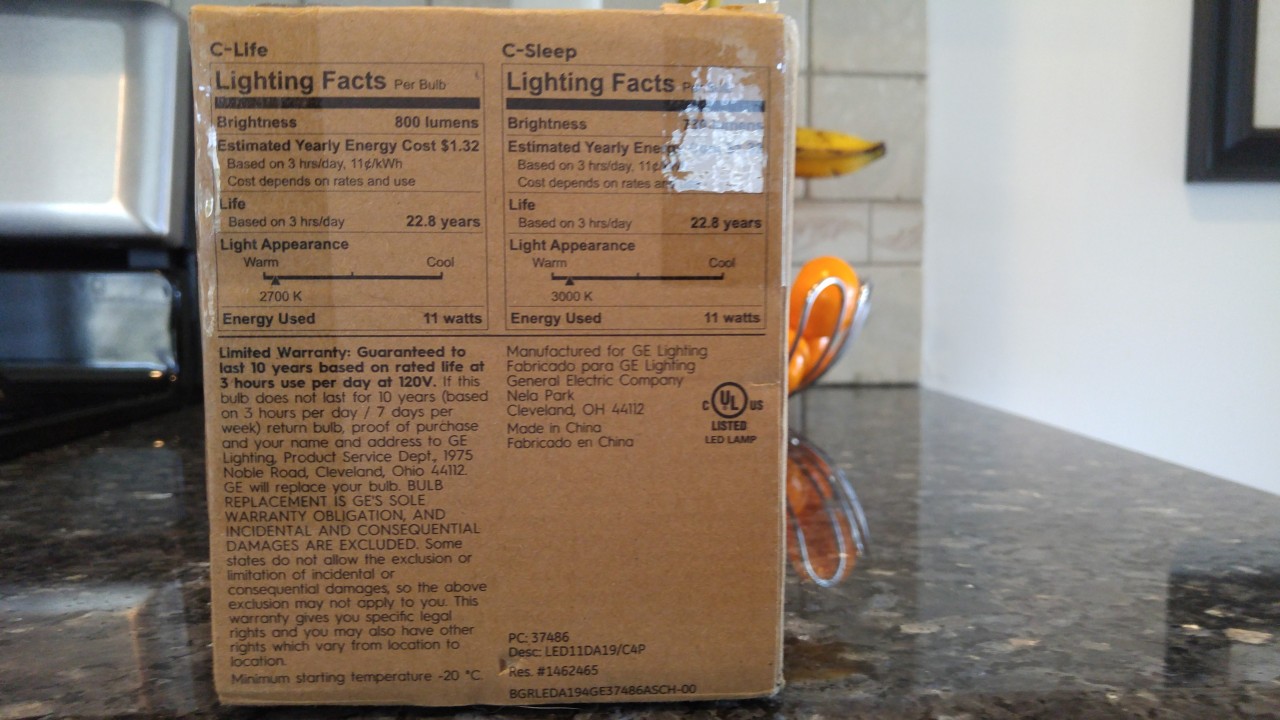As my household slowly but surely makes the transition into a more intelligent one, the world of smart light bulbs is shining into my daily life.
Over the last two weeks, I’ve been a constant user of C by GE. We received their basic starter kit.
The lights, as advertised, offer smart lighting without a hub through Bluetooth communication. That, and their built-for-daily-life hook, are what makes C unique.
It’s unique; but, does it work?
The difference is night and day.
Or, more appropriately, C-Life and C-Sleep.
What I appreciated most about C was its ability to adapt to the time of day, especially for the bulbs labelled for sleep use. When you open the starter kit, you’ll find four bulbs. Two are labelled C-Life and two are labelled C-Sleep. The C-Life bulbs reach a maximum of 800 lumens and use 11 watts. If you use them for three hours a day every day for a year, you’ll spend $1.32 per bulb. That same stat goes for the C-Sleep bulbs, though they output around 720 lumens at their max.
The Life bulbs are meant for use in your everyday space. They’re the ones you’ll put in your kitchen or living room. Their color is static. It’s a warm yellow, sort of like a standard incandescent light of the warm and soft variety. Its brightness ranges form 0-10, with 0 off and 10 at full blast. Two lamps in a large open room set to 10 were plenty to light my living room.
The Sleep lights I liked a lot more. These came in three separate hues. In the morning, they were more of a harsh white, great for getting ready and being finnicky with clothes and (in my wife’s case) makeup. Once afternoon set in, their hue switched from that bright white to yellow, much like what the lights in my living room offered. As we were settling in for sleep and reading, the lights adopted a much warmer, almost red hue that was great for slowing down for sleep.
You can totally disable the hue changing for C-Sleep, if that’s your thing. Really, though, it’s the best feature these lights offer.
Setting up and controlling your C lights can be buggy.
Like I said at the onset of this piece, one of the major hooks of C by GE is that it offers users a completely hub-less experience for owning and using a smart lights.
Other companies do this as well, but they sell bridges and hubs so that customers can control lights with something other than their smartphones.
Here’s how C by GE works. You put the lights in their sockets, turn each on, download the C by GE app, turn on Bluetooth and, hopefully, follow instructions on the screen. The app will guide you through naming your lights and creating scenes so that you can one-touch tweak lights by group to suit, say, eating dinner, hanging out, watching a movie or getting ready.
In concept, this works. When Bluetooth on your phone cooperates with the lights, C by GE is just fine and dandy. The app is only on iOS right now, but by April 1 it will be offered on Android devices as well. At least, that’s GE’s plan.















